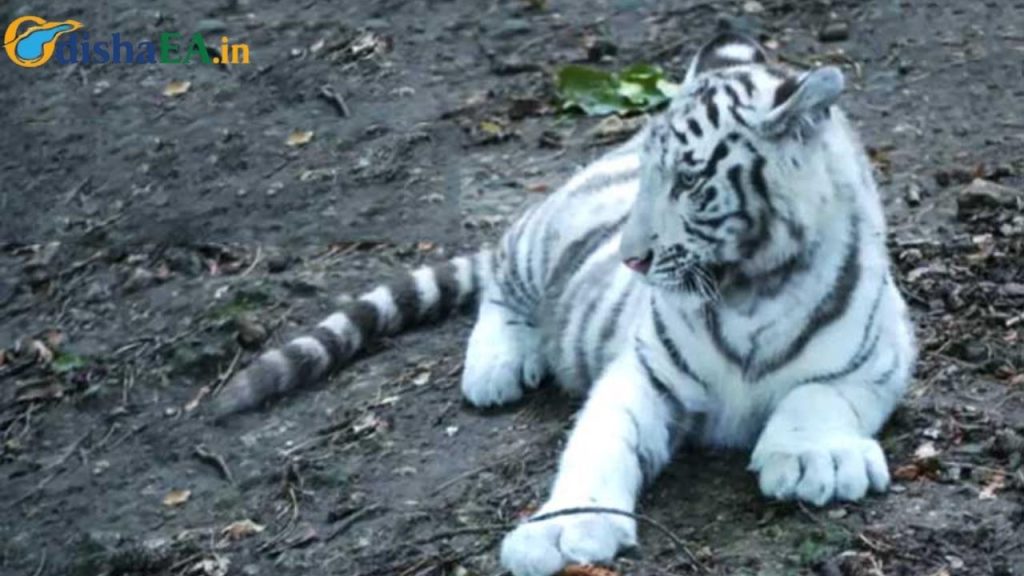In a sad and heart-wrenching turn of events, a white tiger cub at the Nandankanan Zoological Park in Odisha, India, has passed away despite extensive veterinary care and attention. The cub, born on June 7, 2025, to the tigress Mousumi and tiger Rajesh, had been struggling with health issues since birth. Despite the best efforts of the zoo’s dedicated veterinary team, the cub succumbed to its illness on the night of August 22, 2025. This tragedy has cast a shadow on the otherwise successful breeding programs at Nandankanan, and has raised significant concerns about the challenges wildlife experts face in maintaining the health and well-being of animals in captivity.

In this article, we will explore the circumstances surrounding the white tiger cub’s death, the challenges faced by wildlife care professionals, and what this incident means for the future of wildlife conservation efforts.
White Tiger Cub Dies Despite Intensive Medical Attention
| Event | Details |
|---|---|
| Species | White Tiger (Panthera tigris tigris) |
| Birthdate | June 7, 2025 |
| Parents | Mousumi (Mother), Rajesh (Father) |
| Death | August 22, 2025 |
| Cause | Health complications, despite intensive medical care |
| Zoo’s Response | Extensive veterinary care, isolated from mother |
| Current White Tiger Population at Nandankanan | 5 |
| Total Tiger Population at Nandankanan | 28 |
| Concerns | Two surviving cubs also showing signs of illness |
| Expert Assistance | Centre for Wildlife Health (CWH) providing screenings and treatments |
For more information on Nandankanan Zoological Park, visit their official website.
The tragic death of the white tiger cub at Nandankanan Zoo reminds us of the delicate balance required in wildlife conservation. While zoos and breeding programs like Nandankanan’s play an important role in preserving species like the white tiger, they also face numerous challenges in maintaining the health and sustainability of these rare animals. It is vital that we continue to support ethical conservation efforts, raise awareness about endangered species, and ensure that our planet’s wildlife is protected for future generations.
The Importance of White Tigers in Conservation
White tigers are one of the most iconic and rare subspecies of the Bengal tiger, famous for their stunning coat color and striking appearance. However, due to genetic mutations and a narrow gene pool, white tigers face significant challenges in the wild. Their striking white fur, a result of a genetic variation, is not necessarily an advantage in the jungle. In fact, it can sometimes put them at a disadvantage when hunting in the wild, as it makes them more visible to prey.

Nandankanan’s Role in White Tiger Conservation
The Nandankanan Zoological Park has long been recognized for its efforts in breeding and conserving white tigers. With a focus on creating a sustainable environment for both the animals and visitors, the zoo has maintained one of the most successful breeding programs for this rare subspecies. This is why the loss of the white tiger cub has been particularly hard on the zoo staff and animal lovers around the world.
However, even with such programs in place, raising and caring for animals in captivity—especially rare and endangered species like white tigers—comes with its fair share of challenges. These animals are not only a genetic rarity but also require constant medical supervision and care to avoid the diseases and health complications that often arise from inbreeding or genetic mutations.
Medical Care and the White Tiger Cub’s Struggles
From the moment of birth, the white tiger cub showed signs of being unwell. To ensure it received the best care possible, the cub was kept in the veterinary unit at Nandankanan Zoo, separated from its mother. This isolation helped prevent any risk of infection while providing the cub with the medical attention it required. Unfortunately, despite the tireless efforts of the zoo’s veterinary team, the cub could not overcome the health issues it faced, which led to its passing.
The Aftermath: Health Concerns for Other Cubs
With the death of this cub, the zoo is now focusing on the health of the two surviving cubs from the same litter. These cubs, though still alive, have started showing signs of lameness, raising concerns about the possibility of similar health issues that might have contributed to the first cub’s death.
Experts from the Centre for Wildlife Health (CWH) have been called in to conduct screenings and treatments on the surviving cubs to determine the cause of the illnesses and to prevent further loss. This incident serves as a stark reminder of the fragility of young wildlife and the importance of ongoing medical attention and research.
What Does This Mean for White Tiger Conservation?
The death of the white tiger cub brings to the forefront several important considerations in the field of wildlife conservation and breeding programs. While zoos like Nandankanan play a crucial role in preserving endangered species, it is important to recognize the limitations and challenges faced in captivity. There are concerns about genetic health, inbreeding, and the long-term sustainability of breeding programs that focus on rarer animals like the white tiger.
The passing of this cub also highlights the broader issues of wildlife conservation efforts, where breeding programs must not only focus on increasing populations but also on ensuring the genetic diversity of species. It is clear that the preservation of such rare species requires more than just breeding—it requires a careful, holistic approach to health, genetics, and habitat management.
Practical Advice for Wildlife Enthusiasts
If you’re passionate about supporting wildlife conservation efforts, here are a few things you can do:
- Support Ethical Zoos and Sanctuaries: Always choose to support zoos and wildlife sanctuaries that have strong conservation programs and ethical breeding practices. Look for organizations that work closely with conservation experts and promote habitat restoration.
- Educate Yourself and Others: Learn about the challenges facing endangered species, particularly white tigers, and share this knowledge with others. Raising awareness is a crucial part of the conservation effort.
- Donate to Conservation Funds: Many zoos and organizations dedicated to wildlife conservation accept donations to fund research, breeding programs, and veterinary care for endangered species. Your contribution can directly support these efforts.
- Advocate for Wild Habitats: While breeding programs are crucial, the preservation of natural habitats is equally important. Advocate for stronger environmental protections and support organizations working to protect wildlife in the wild.
CM Majhi Advocates for Unified Action at Odisha’s Human-Elephant Workshop
Elephant Dies of Electrocution in Rairakhol, Odisha: CM Orders Probe
Odisha Secures Over Rs 2,000 Crore for Massive Afforestation Push—What This Means for the Future
FAQs
Why are white tigers so rare?
White tigers are a genetic mutation of the Bengal tiger and are extremely rare in the wild. This genetic trait is caused by a recessive allele, and inbreeding has led to a limited gene pool, making the mutation even rarer.
How are zoos helping with white tiger conservation?
Zoos like Nandankanan play an important role in breeding and caring for white tigers, which helps increase the population in captivity. They also work to ensure that the tigers receive proper medical care and are part of global conservation efforts.
What can be done to protect white tigers in the wild?
Protection of natural habitats is essential. Creating safe spaces for white tigers to live in the wild, free from poaching and habitat destruction, is key to their survival. Stronger environmental policies and global cooperation can help in the conservation of these majestic animals.





